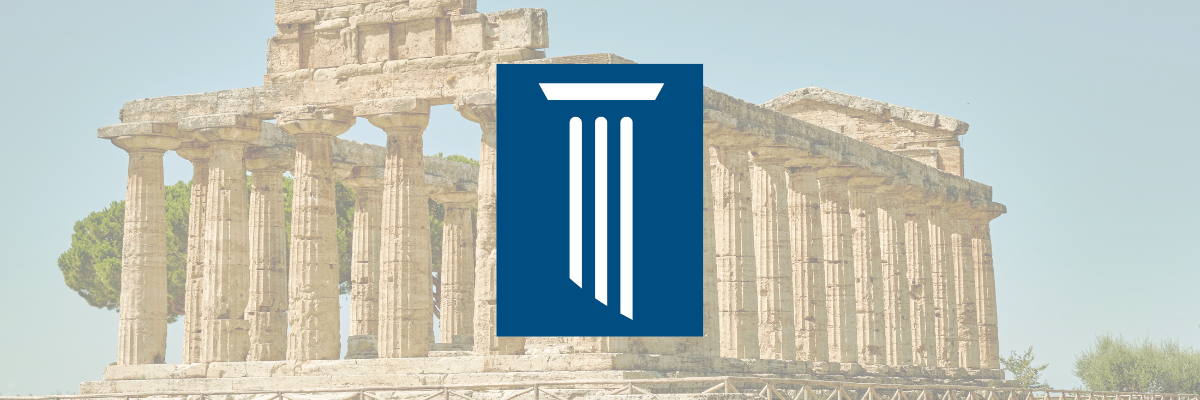Check Out Our New Logo
We are so happy to announce a new addition to Rochester Classical Academy – a new and improved logo! The logo is made up of 4 very important parts to represent the classical discipline of heraldry but find their meaning in God’s revelation to us.
We hope you enjoy RCA’s new look; it represents who we are, a school dedicated to partnering with parents to raise up young people who seek Good, love Beauty, and proclaim Truth, knowing that all three come from our Heavenly Father.

The Star of Goodness
The star is a heraldic symbol for goodness. We know from Genesis 1:16 that God made the stars. Two verses later he calls them good, along with the sun and the moon. Ancient navigators looked to the stars to guide them on their journeys. Matthew 2:1-12 records magi from the east traveling to worship Jesus by following a star that leads them to the good experience of worshiping Him.
For believers, we know that God cares for us and wants us to look to Him and not ourselves to guide our lives. Daniel 12:3 says “And those who are wise shall shine like the brightness of the sky above; and those who turn many to righteousness, like the stars forever and ever.”

The Rose of Beauty
The rose is a heraldic symbol for beauty. At our school, we celebrate beauty wherever we can find it starting with the natural world and extending to the work we do. Ecclesiastes 3:11 says “He has made everything beautiful in its time. He has also set eternity in the human heart; yet no one can fathom what God has done from beginning to end.” Some examples of beauty are more obvious—paintings, drawings, music, poems, handwriting, but others are less obvious such as woodworking, cooking, mathematical equations, and public speaking.
God Himself made the world beautiful and He gave us the ability to be perceivers and creators of beauty as well. While different cultures define beauty differently, we believe students should pursue beauty in their schoolwork here but also throughout their lives. We want them engaged in the work of making the world more beautiful, as the title character did in Barbara Cooney’s Miss Rumphius.

The Column of Constancy
In classical heraldry, the column is a symbol of courage and constancy. In Ancient Greek and Roman architecture, the Doric is the oldest of the three orders. Therefore, we include the Doric column in our logo as our way of recognizing our ongoing and inseparable connection to the classical educational tradition. Being a classical and Christian school is countercultural, and it will therefore require courage to pursue and constancy to the path, especially at this cultural moment.

The Torch of Truth
The torch is a heraldic symbol for truth. When we look to the Bible, we often find truth depicted as a light. Proverbs 6:23 says, “For the commandment is a lamp and the teaching a light, and the reproofs of discipline are the way of life.”
With competing claims for truth in newsrooms, classrooms, and living rooms, now is the time to educate a generation to tell the truth and speak into the culture as they engage with it. Our goal is for our students to engage the world equipped with God’s enduring truth.
Our torch is made up of two elements: the flame on top, and the column which supports it. In classical heraldry, the flame symbolizes zeal or passion. Our mission statement includes cultivating a “joyful inquiry into God and His creation…” and our students are excited to learn! The things we put in front of them may inspire careers later in life but central to our mission is that we spread a feast of knowledge for our students that is worth knowing in any of itself—because God put it there to be known.
More importantly, we aim to fan the flame of zeal or passion for Christ—who He is and what He has done. On the road to Emmaus, two disciples discuss encountering the risen Christ before they knew who He was, saying to each other, “Did not our hearts burn within us while he talked to us on the road, while he opened to us the Scriptures?” (Luke 24:32).
Notice, however, that the column is underneath the flame, forming the base of the torch. We used this depiction to show that constancy to the classical tradition is subordinate to truth. Our educational model has origins in pre-Christian thinkers such as Plato, Aristotle, and Virgil. As it developed over more than two thousand years, it has taken the form of a Great Conversation between people in diverse places and disparate centuries, many of whom did not know the Lord. We study the ideas of these people because we want to find truth wherever it is. In our view, engaging in the Great Conversation is the best way of raising up students to a depth of knowledge and of character, faithful to the truth of God’s word, that will let them flourish throughout their lives, regardless of what comes their way.

